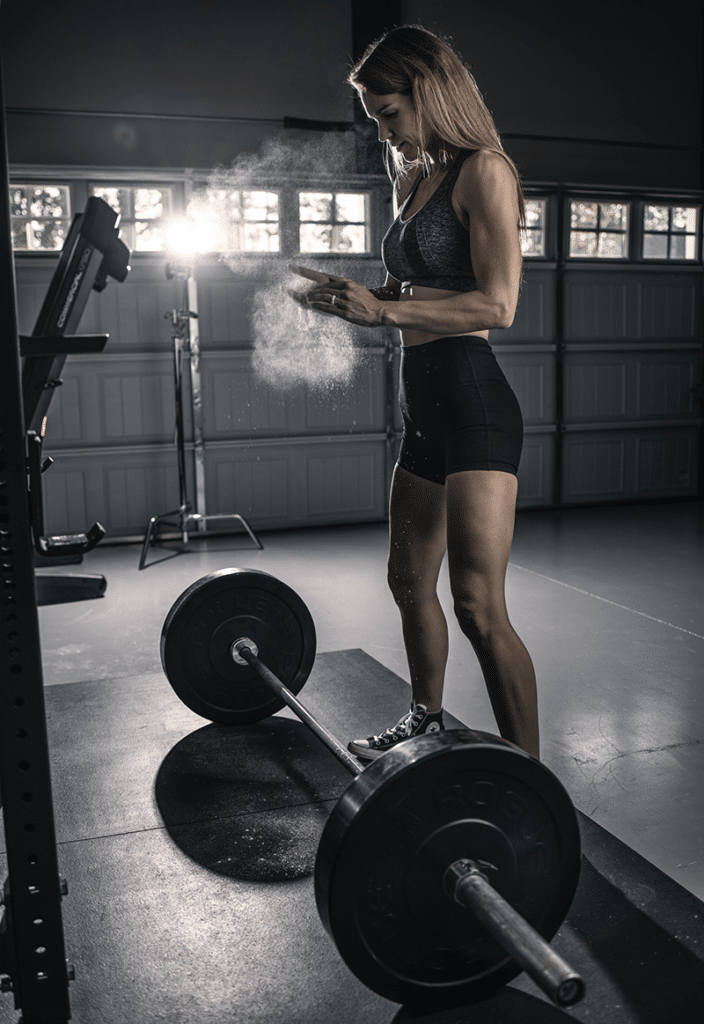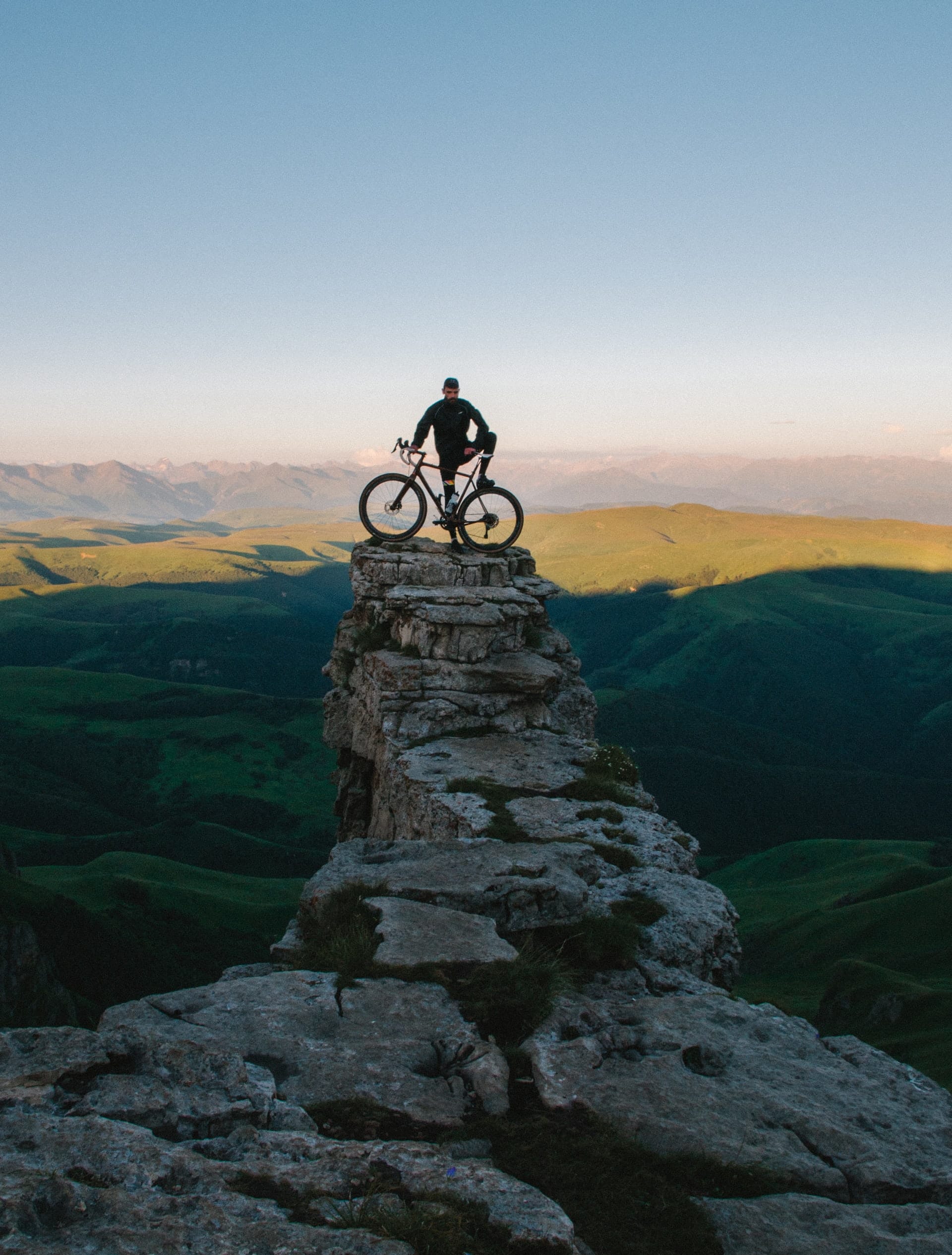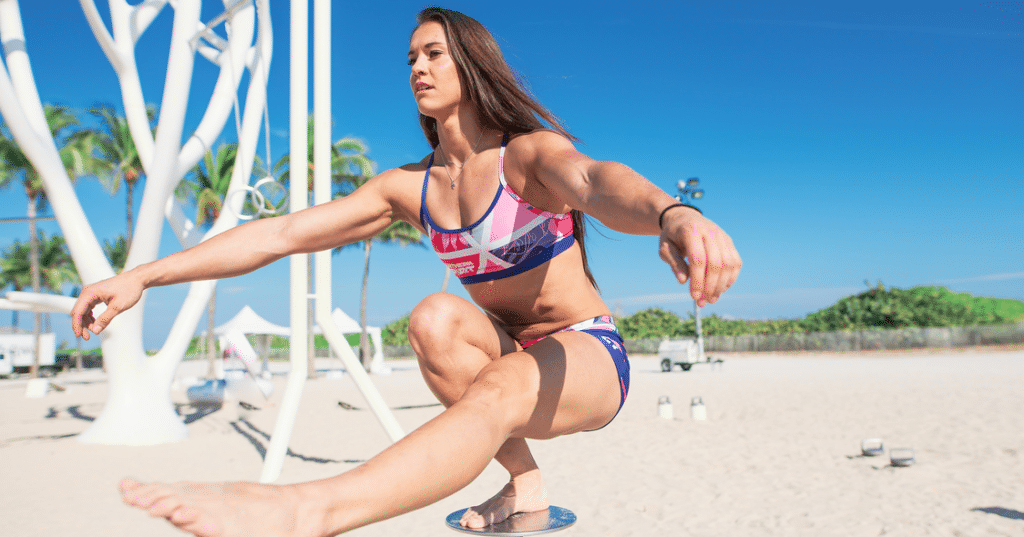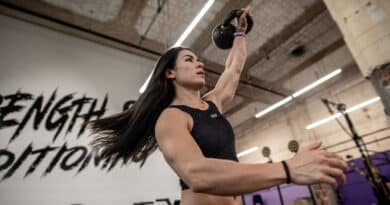How to Pistol Squat – Technique, Benefits, Progressions and Muscles Worked
The Pistol Squat is a difficult and often awkward movement for many people.
This guide will provide you with easy progressions and training tips to help you achieve excellent form, strength and confidence.
The aim of this “how to” series is to take a single exercise, movement or skill that I currently cannot do, work out how to do it and document the entire experience in a single article.
Each article will only be published once the goal that I set for myself has been accomplished.
My goal is that whatever your current standard, this article will help you improve your pistol squat if you can already perform them, help you get your first, or allow you to start stringing them together in higher rep sets with much smoother form.
CONTENTS
- Benefits of the Pistol squat
- Good technique
- Mistakes to avoid
- Training tips and progressions
- How to improve ankle mobility
- How to improve hip mobility
- Warming up for Pistol squats
- My training diary
- Helpful pistol squat video tutorials
- Glossary of terms
MY GOAL
My goal is to perform 20 good quality pistol squats in a row, making sure to break parallel and stand to full hip extension every time. This will be on alternating legs, right then left, with 10 total reps on each leg.
I must be able to do these in a pair of functional training shoes (in this case Nike Metcons) and not Olympic Weightlifting shoes as these would give an artificial advantage.
I may use Olympic Weightlifting Shoes as part of the training.
WHAT DO YOU NEED TO PERFORM 20 ALTERNATING PISTOL SQUATS?
- Good ankle mobility in both ankles
- Flexible hip mobility
- Enough unilateral strength in both legs to support your body throughout the full range of motion of every rep
- Decent balance
- Strong quads and hip flexors to keep the non-squatting leg raised
WHY IS THE PISTOL SQUAT A GOOD EXERCISE?
The Pistol Squat develops muscle, power and strength in the glutes, quads, hamstrings, calves and core.
It is an effective exercise to identify and eliminate general imbalances in strength, mobility and movement.
Unilateral work is an excellent way to see where you overcompensate or favour one side over another due to weakness or poor form.
The Pistol Squat will help to find these imbalances and rectify them.

OUTDOOR FITNESS – HOW THE PISTOL SQUAT HELPS IN REAL LIFE
This functional skill will provide better leg strength and muscular endurance for skiing (unilateral strength), running, trekking, jumping, cycling and just about any sport or activity that involves your legs.

It will also improve posture and ankle mobility for surfing and yoga, as well as augment leg strength and flexibility for climbing
PISTOL SQUAT TECHNIQUE
- Stand on one leg, with the toes pointed forward and/or slightly turned out.
- Lift the other leg off the floor
- Fully extend it in front of you and tighten your quad
- Actively turning your toes and knee outward slightly (you should feel your glutes activate)
- Inhale and brace your core and back muscles and then hinge your hips slightly forward.
- squat down as low as you can go whilst maintaining control at all times
- Ease into the bottom position, don’t let your extended leg tough the floor
- Press hard through the floor, engage the abs and rise back to the starting position, exhale on the way up
- Alternate the leg and start the next rep
TRAINING TIPS TO ESTABLISH GOOD PISTOL SQUAT TECHNIQUE
Actively push knees over toes in order to create a cleaner movement and a more vertical back position.
FOOT
On the way back up out of the hole push through the midfoot in order to generate power and improve balance.
Maintain a strong foot arch in order to improve grip and stability.
Curl your toes into the floor. Imagine your foot like a claw that grips into the ground to create more stability.
KNEE
Keep your knee tracking over the middle of your foot
Resist the movement of your knee to bend inwards
THINGS TO AVOID
Inward travel of the knee, past the midline of your toes (valgus of the knee) this is a sign of weakness in the hips or the quads
Foot collapse, if the foot is not stable, falling inwards or shifting around then the force transfer will be severely diminished.
Raising the ankle at the bottom of the pistol squat, if this happens to you then you need to work on your ankle mobility and overall movement.
PROGRESSIONS AND TIPS TO IMPROVE MOVEMENT AND STRENGTH FOR THE PISTOL SQUAT
Elevate the heel
If you struggle with ankle mobility (as I do on my left leg) then one helpful progression tip is to perform the exercise with an elevated heel.
Use a weight plate or a piece of wood to raise your heel. This will give you artificial ankle range of motion.
This will help you to keep your knee further forward and maintain a more upright back position.
Box Pistols – Elevate the entire movement
Another part of the movement that is often difficult is keeping the non-squatting leg straight. This is often due to a lack of hip flexor or quad strength. These are an excellent exercise to use to build that stability and strength.
If this is the case for you, try performing elevated pistol squats. Stand with your squatting leg on a bench or box. This will allow the hovering leg to sink lower during the entire movement. This will give you a bit more breathing room to do your pistol squats.
Over time, as you get more flexible and stronger, try to flex that raised leg as high as you can.
Eventually you will notice that you are keeping it above ground level. When you get to this stage, ditch the elevation and work them on the ground.
Add weight to the movement
Another effective way to make the movement easier to perform and practice is to add weight. Take a dumbbell or kettlebell and hold it out in front of you with both arms. As you descend in the eccentric, downward part of the pistol squat, adjust and move the weight to help you balance. The weight will act as a counterbalance.
Your centre of mass is pushed further forward making it easier to go up and down.
The weight makes it easier for the front of your shins and ankles to activate and bring your knee forward.
Banded Pistols
Stretch a band between the uprights of a squat rack and attach it at either end to the j-hooks or the metal frame. Place the band at hip height (as you get better you can lower the band).
You can now sit on the band whilst performing the pistol. This will add stability to the entire range of motion and add a little bit of extra support at the bottom of the squat.
This progression is a great way to teach the balance and positioning necessary for performing full pistol squats
You can vary the difficulty level by:
- Changing the tension on the band (by using a light or heavy band)
- Altering the height of the band
Adjust this progression accordingly to suit your personal ability level.
Perform the exercise slowly
If you are having trouble with moving through the full range of motion for the pistol but aren’t sure where the problem lies, slow down the entire exercise as this will help to reveal the trouble spots.
Pay extra attention to these parts of the movement and use these progressions to target that particular part.
Step-in trick technique
WODprep offer brilliant training advice, and this step-in progression progression comes from them. The step-in trick takes a difficult movement and makes it a little easier.
The idea is to take a step into the movement, and the added momentum will force your body forwards slightly and add a little more flexion into the ankle and foot.
This is not as fast as being able to string them together and alternate between left and right, however in workouts it can be a great way to establish a rhythmic tempo, especially on longer AMRAP workouts such as the CrossFit® WOD Mary.
Candlestick Pistols
Another great progression from WODprep to use when you are learning are candlestick pistols.
You are also a great way to scale pistols if they appear in a workout. You still get the full range of motion and it’s a lot easier to do these candlestick pistols that full pistols.
Focus on catching your body in the full squat position, your weight on your heels and standing up to full hip lock out.
Practice in Olympic lifting shoes
Olympic lifting shoes elevate the heel of the foot and provide an exceptionally firm and stable base from which to generate power. This makes them perfect for wearing when you practice and train pistol squats.
If you struggle with ankle mobility (dorsiflexion) and need to dedicate more time to improve it, try wearing Olympic lifting shoes whilst you are developing the necessary strength, working through other progressions and improving your mobility and movement.
Try not to always rely on Olympic lifting shoes. Use them as an extra when you need them.
Wear knee sleeves
Knee sleeves offer extra support and will augment the natural movement of the body.
They can be used to assist with the development of proprioception. The thicker the material of the knee sleeve, the more support they will offer.
Note: The above tips all work well and will help you. I will use them when training for my goal in order to help me improve my strength and movement. However, I want to achieve 20 alternating reps without “stepping-in” or using the assistance of any equipment.
In the case of CrossFit® and functional fitness competitions, where the aim is to complete the exercises as quickly as possible, then knee sleeves and Olympic lifting shoes can be helpful additions to improve speed and scores.
HOW TO IMPROVE ANKLE FLEXIBILITY
WARMING UP FOR THE PISTOL
MY PISTOL SQUAT DIARY
So here is how it went for me.
CURRENT ABILITY LEVEL
So, having just tested myself, I managed one bad pistol squat on my right leg then fell backwards in the bottom position with my left. I was wearing a pair of Nike Metcons.
Not a great start!
I tried again with Oly lifting shoes and managed 3 reps on the right leg. Zero on the left.
CURRENT PROBLEMS AND POTENTIAL SOLUTIONS
My ankle mobility is much worse on my left leg, making me fall backwards when I reach the bottom of the movement. I need to spend more time working specifically on ankle mobility.
My knee tracked inwards slightly on the way back up (the concentric portion) from the bottom of the squat. My leg strength is fairly good so I think I should work on firing my glutes properly and that may help.
There are definitely weaknesses in my leg and glute strength.
My back is rounded a lot at the bottom of the squat. When I straighten it out I tip backwards. I think I need to improve my ankle flexibility so that I can shift the whole centre of gravity forwards and maintain a straight (neutral) spine.
Pistol Squat Training
I spent two weeks doing 10 – 15 minutes ankle and hip mobility work a day. This is definitely helping to prep my body more effectively.
Testing again I can now do 8 with the right leg and 3 with the left.
Here I am also holding my extended foot with my hand to improve balance.
I also practice at the end of each daily workout for 5 minutes trying pistol squats with elevated heels/.
After another 3 days I achieved 18 alternating pistol squats in Metcons whilst holding each foot during each rep.
Another 3 days go by, I have been using the candlestick method and stepping in progression a lot to “grease the groove” and get myself used to the movement. I feel much more comfortable with the exercise now.
2 Days Later
Today I managed to complete 20 alternating step-in pistols.
I was wearing Olympic lifting shoes, and I held the foot of the raised leg because this made me feel more stable.
I am happy with this milestone because even though it is not the exact goal that I have set for myself, it would be an acceptable standard in a CrossFit® or functional fitness competition.
I noticed a few things that really helped today. If I curl the palm of the hand that is not gripping the shoe upwards to face the sky, then it helps to keep my body open and balanced. I also found that pointing the toe of the raised leg outwards slightly helped to achieve this same goal as well.
This is easier to do when you grip your foot, as I could use the grip to turn my foot and toes outwards.
The step-in method is exceptionally useful. If time is not the highest priority then this is a great technique to add in. It really helped me add rhythm and confidence into the movement.
For this session I warmed up for 5 minutes in a non-specific way, spending most of the time doing air squats or sitting and moving slowly in the bottom squat position. I added this entire pistol squat session at the end of another 50 min bodyweight workout.
Once I had completed the 20 alternating pistols I did 4 sets of 30 second holds in the bottom position. The stability from the Olympic lifting shoes allowed me to concentrate on staying in the right position on both legs.
1 Day Later
Got it!
20 alternating pistol squats wearing Nike Metcons without heel elevation or holding my feet.
HOW TO USE PISTOL SQUATS TO ACHIEVE DIFFERENT GOALS
Movement Integrity – Reps, Sets, and Weight Recommendations
This should be done with a light to moderate load for moderate repetitions in a controlled fashion to instil proper control and coordination.
3-4 sets of 8-10 repetitions with light to moderate loads, at a controlled speed (focusing on proper eccentric/lowering of the weight), resting as needed.
Muscle Hypertrophy – Reps, Sets, and Weight Recommendations
If the goal is muscle hypertrophy it is key that a lifter performs this movement with moderate loads at a controlled tempo to increase time under tension.
2-3 sets of 12-15 repetitions with moderate loads, keeping rest periods 45-90 seconds.
Strength – Reps, Sets, and Weight Recommendations
For more strength focused work, be sure to used moderate to heavy loads in still a moderate repetition range. It is not advised to lift with maximal or near maximal loads, as this is an accessory movement.
3-4 sets of 8-10 repetitions with heavy loading, resting as needed.
Muscle Endurance- Reps, Sets, and Weight Recommendations
While the pistol squat may not necessarily be a lift that is trained for muscle endurance, some lifters may want to train more repetitions to increase training volume, and muscle hypertrophy. The below rep ranges can work best for this type of goal.
2-3 sets of 15-20 repetitions with light to moderate loads, keeping rest periods under 30-45 seconds.
HELPFUL PISTOL SQUAT VIDEO TUTORIALS
If you enjoyed this article, try these Sit Up or HIIT workouts.




